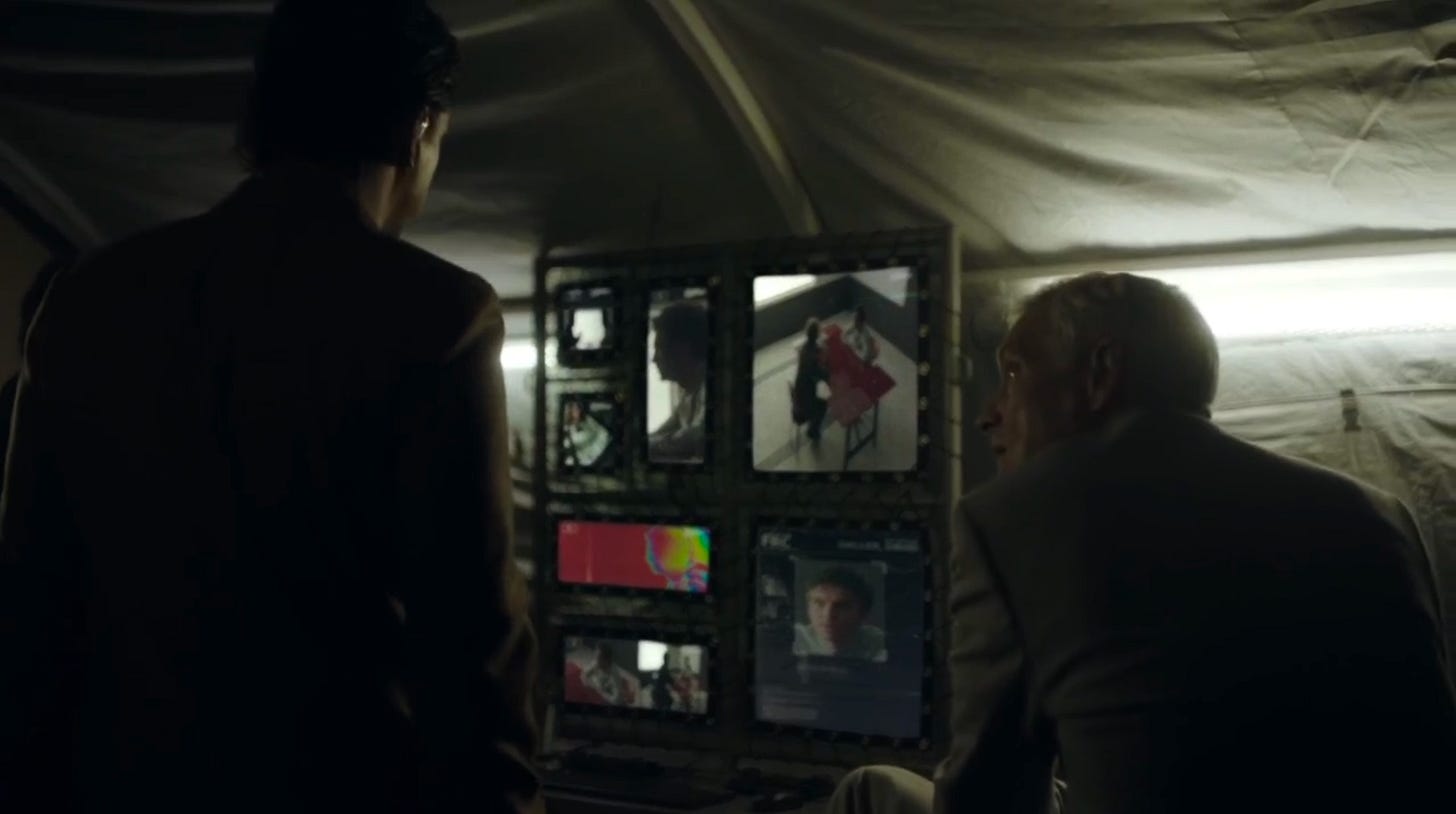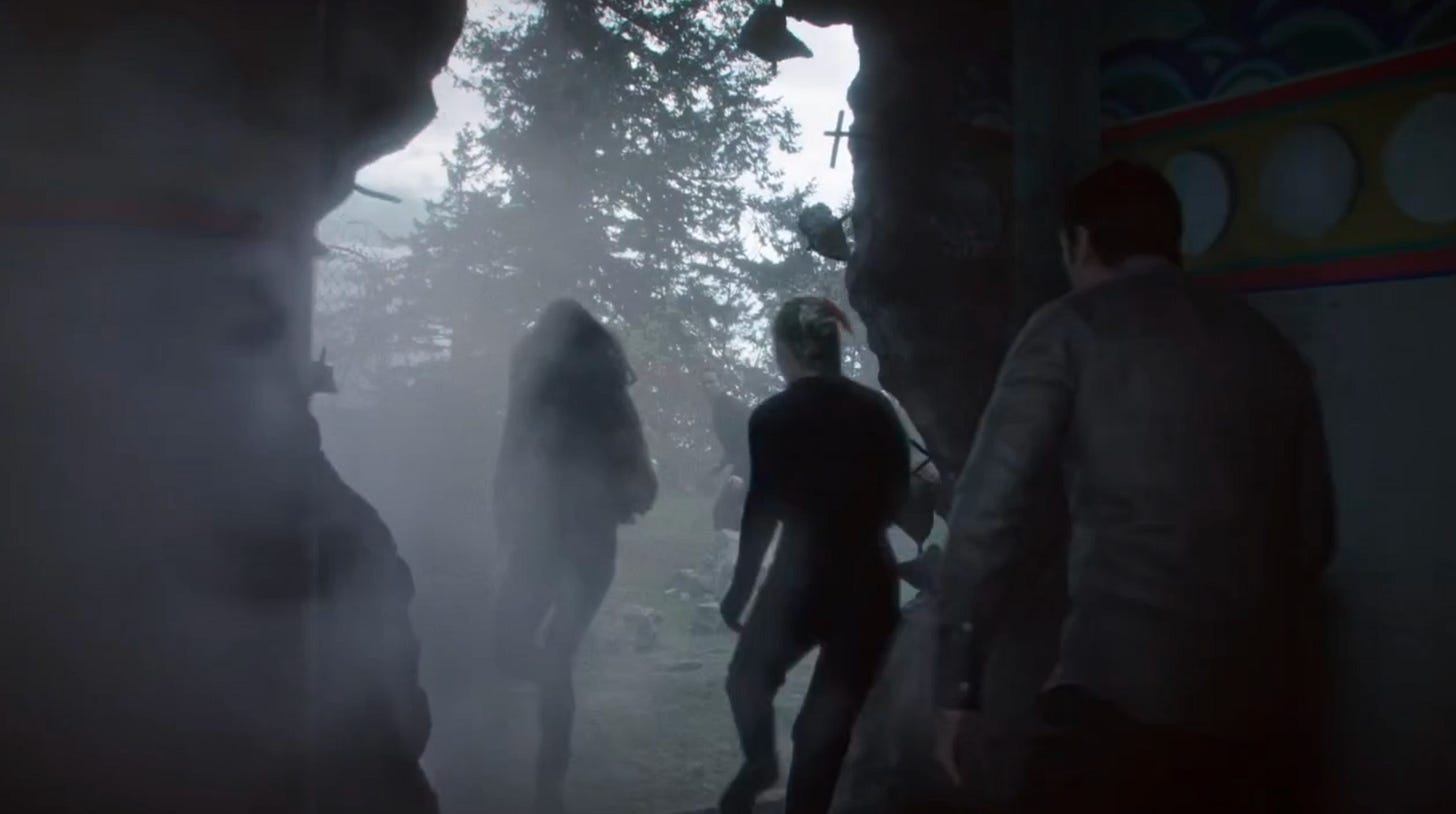The Importance of Oners in LEGION
How Legion uses specific shots to seperate objective and subjective POV
Legion’s pilot “Chapter 1” has two long oners which are impressive on a technical level, but also serve an important, necessary narrative purpose.
Establishing Fact
The first comes about halfway through (starting at 0:16 below), and walks us through the compound where David is being held — which until this shot both he and we thought was a ‘normal’ psychiatric facility.
The other oner we’re looking at (starting at 0:19 below) is part of the last scene of the pilot, and the amount of action means not only does it take even more choreography and steady hands than the first, but a lot more CGI, since trying to do a lot of these stunts practically would be more dangerous and more likely to ruin a shot than doing it in multiple setups.
So why is it so crucial these scenes are both oners?
Because Legion centres around David, a character who
1. was diagnosed with schizophrenia at a young age
2. has a variety of psychic powers and can often hear peoples’ thoughts
3. has been and is being forcibly medicated, lied to, and gaslit by family members, doctors, and more.
Because of all of the above, many scenes change meaning, are shown from multiple points of view, or David seems to remember one way but is told something different happened, sometimes three different stories from three people, and he sees and talks to people who may or may not ‘be there.’
While that is part of the narrative, it means when the episode wants to the audience to KNOW something objectively happened / it happening, it needs to do something different / specific . . . and that’s where oners come in.
So when David’s Interrogator Clark Debussy leaves the room in that first oner, and the camera follows him, that’s the show telling us this isn’t David’s imagination; David stays in the room and we follow Debussy, never editing so we know this is the actual fact of the compound David is being detained in.
By the time the first cut comes at 1:12, we’ve been shown everything which comes in the scene after: the surveillance screens which run long thick cables to the room we just left, the characters we’re meeting for the first time, the guards in tactical gear, etc.
In other words, even once it breaks into closeups, we know what they’re saying and showing and referencing is the ‘reality’ of the world, because we were just introduced to it all in the oners.
No matter what has confused us (and David) to this point, we know what is being shown and told in this sequence is objectively happening.
Distinguishing Fact From Maybe-Fiction
The second oner is used similarly, but with an important difference; we’re ‘with’ David the whole time.
At several points in the pilot we see one thing, only for future scenes to recontextualise it and/or cast doubt on it happening the way we saw.
So when it comes time for David to make a break for it, using a oner tells us that he is actually escaping, not just imagining escaping, and it also tells us he believes this is happening.
The oner starts as David steps over the threshhold of the psychiatric compound; it’s probably part practical, as doing all the chatter inside (next to a big pool of practical water, and maintaining a CGI hole where they’d all have to run, etc) would be a lot of time and money, but using the “group starts inside and walks through the wall” is also narratively appropriate, because arguably David’s imagination could kick in here, but we’re seeing it happen, and seamlessly connect to the rest of the action, so it is also presented as an objective truth.
The oner lasts two minutes before breaking into new shots; like the first, leaving a oner to use more ‘normal’ edit is likely for technical reasons (those camera ops and grips are working their arses off!) and also because oners during exposition and ‘multiple people exchanging short sentences’ is both trickier and less interesting.
But like the first shot, by the time we get to the exchange near the water, we and David have been shown enough to accept this is all actually happening.
An added bonus which ties the two together visually as well as thematically is use of the swimming pool location, though in the first we see it being prepped and in the second it’s been filled with water, the better to confuse David, while we have been shown exactly what’s going on.
In Short
Strategic use of oners can do more than sweep the audience off their feet, it can give them vital information about the universe, especially when there’s an unreliable narrator, divergent scenes, or multiple points of view involved in your story.
There will always be budgetary and practical limitations to your oners, and also often times where oners may be less interesting or actually hamper delivery of dialogue, but consider where they can start or stop in the middle of scenes and still be as effective.
Oners are FUN!
IMDB
Legion 1.01 “Chapter 1” (dir. Noah Hawley, DoP Dana Gonzales)




